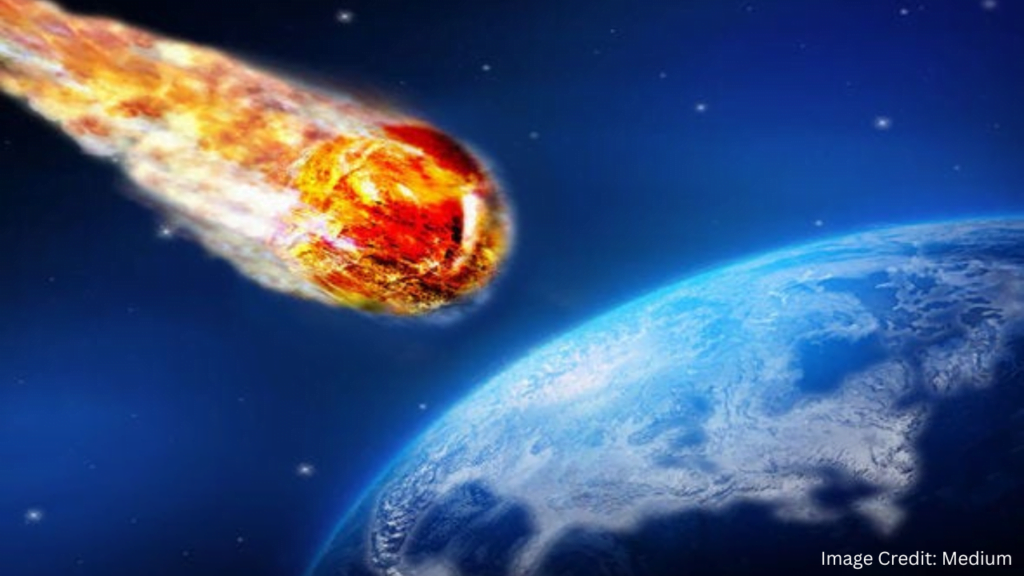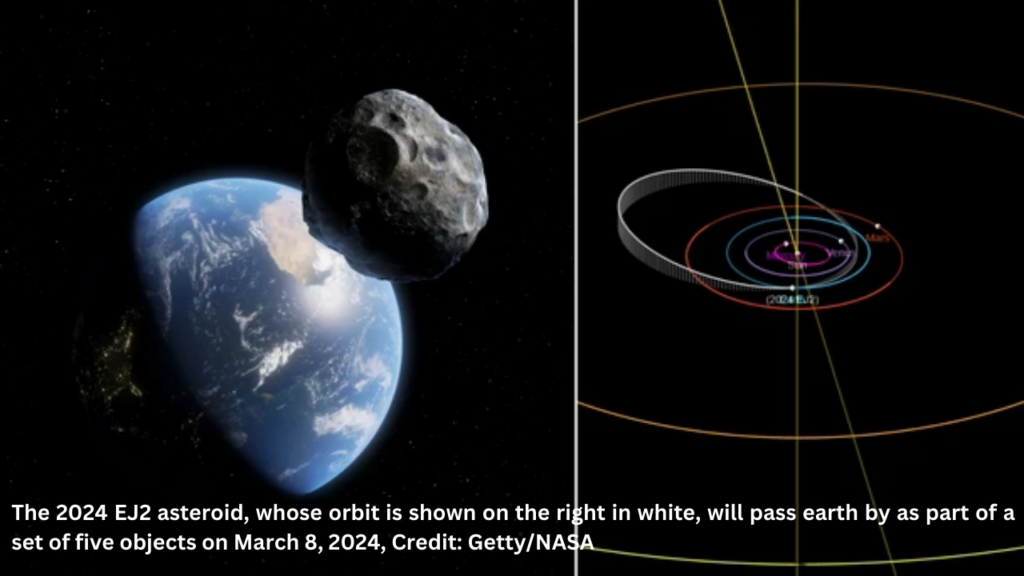According to NASA, a house-sized asteroid that is traveling at nearly 31,000 mile/hour is expected to pass close to Earth today.
Later today, the rock known as 2024 EJ2 will quickly pass by Earth and get closer to the planet than the moon.
NASA’s Asteroid Watch database indicates that 2024 EJ2 will pass by today along with four other asteroids.

It’s also rather close, as seen by photos taken by NASA’s Solar System Dynamics Lab.
The other five asteroids in the group include two “bus-sized” asteroids that are 7 meters wide, one that is the size of a home, and the biggest, which has a diameter of about 60 meters and is as broad as a commercial airplane.
2024 EJ2, being just less than 20 meters in diameter, is identical in size to the 2013 Chelyabinsk meteor, whose flight across the Russian sky was captured on camera and went viral.
This meteor might very well destroy a small city on impact because of its size and speed; if it were to deviate from its intended path, it would cause significant harm.
Luckily, NASA has not classified this meteor as a “potentially hazardous object” since an object must be larger than 150 meters wide to qualify for this classification.

Although 2024 EJ2 will pass Earth for the first time, it will also fly by Earth in 2031, but from a little further distance.
Although the near-misser of today may not seem like much, NASA reports that a massive space rock, up to one kilometer in diameter, is expected to fly past Earth in April of this year.
This massive meteor will pass Earth at a distance greater than that of the Moon yet still far closer than Venus, our closest planet.
Over the last three decades, NASA has been tracking things that it refers to as “near-Earth objects” (NEOs): comets and asteroids that circle the Sun and are within 48 million kilometers of Earth.
However, the space agency established the Planetary Defense Coordination Office (PDCO) in 2016 “to find, track, characterize and mitigate against NEO impacts” as a specific precaution to offset the possibility of “potential impact hazards.”
A spacecraft may be sent outside Earth’s orbit to “intentionally collide” with an asteroid, deflecting it off path and sparing our planet. This is the most amazing proposal from the PDCO, called the Double Asteroid Redirection Test, or “Dart.”
Tiny Asteroid Impact Near Berlin on January 21
On January 21, a tiny asteroid was seen striking through the sky close to Berlin. This resulted in a long-lasting, brilliant, and safe fireball that was visible over a wide area.
It was only detected the day before by a Hungarian astronomer, proving that NASA is not able to observe everything.
The meteor, known as 2024 BX1, was just the eighth to be found prior to its collision with Earth.
The first person to see this asteroid was astronomer Krisztián Sárneczky, who is stationed at the Piszkéstető Mountain Station and is connected to the Konkoly Observatory in Hungary.
Sárneczky reportedly made the finding at the observatory using the 60-cm Schmidt telescope. NASA released a thorough forecast of the impact site and timing after the cosmic object was identified.
Enhancing our knowledge and readiness for such cosmic occurrences requires being able to identify and monitor such meteors beforehand.
.






